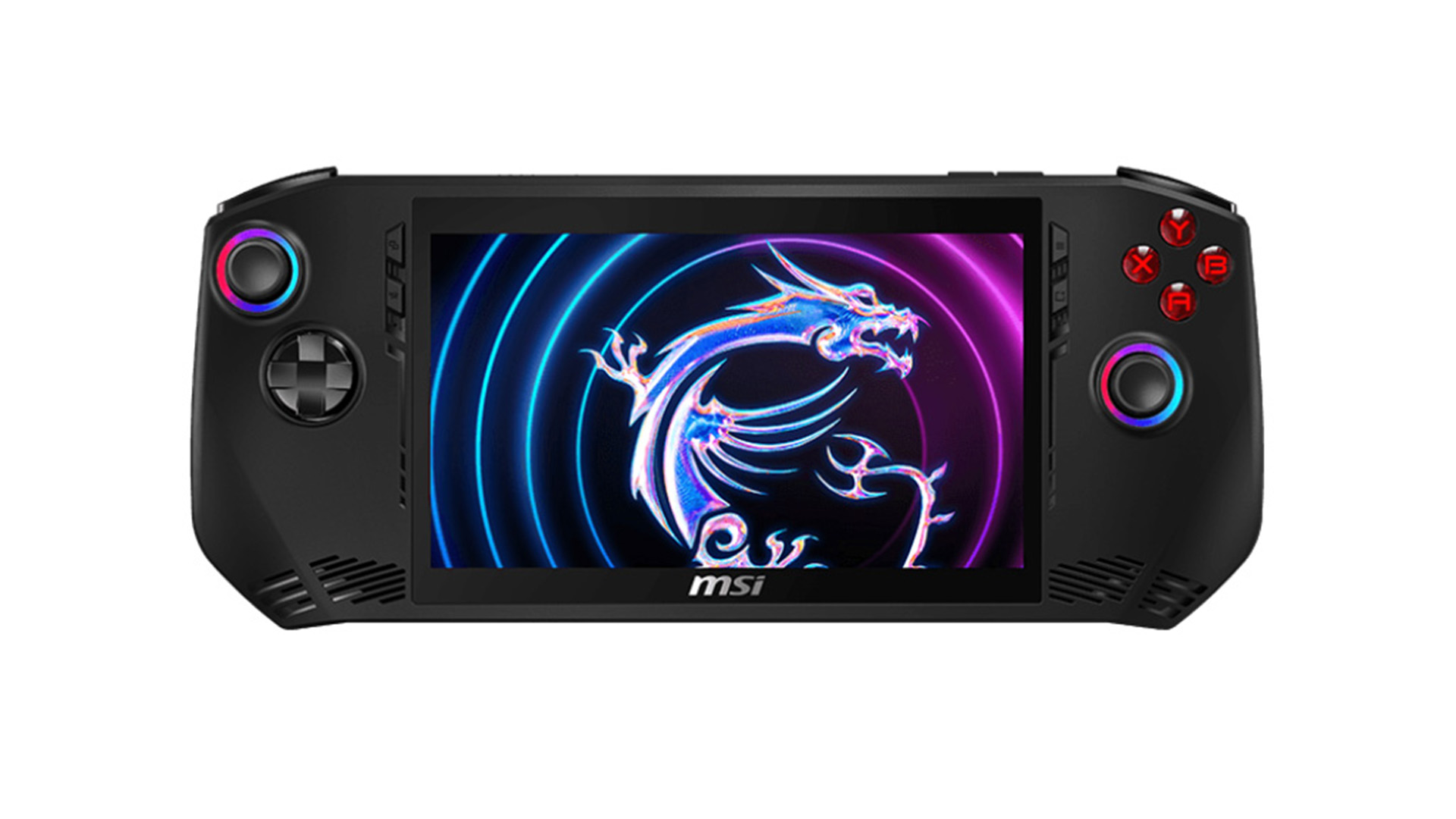STG Play’s Darren Price joined Intel at this year’s Consumer Electronics Show in Las Vegas.
AI was very much the focus at the show and Intel was keen to show off the capabilities of the new Intel Meteor Lake Core Ultra mobile processor with its onboard neural processing unit (NPU). As a surprise, Intel revealed the Intel Core Ultra 7-powered MSI Claw A1M Windows-based handheld gaming device.
MSI’s new handheld console makes use of Intel’s Core Ultra 7 all-in-one mobile processor to provide CPU, GPU, and NPU functionality. These new chips have been designed to maximise performance whilst preserving battery life.
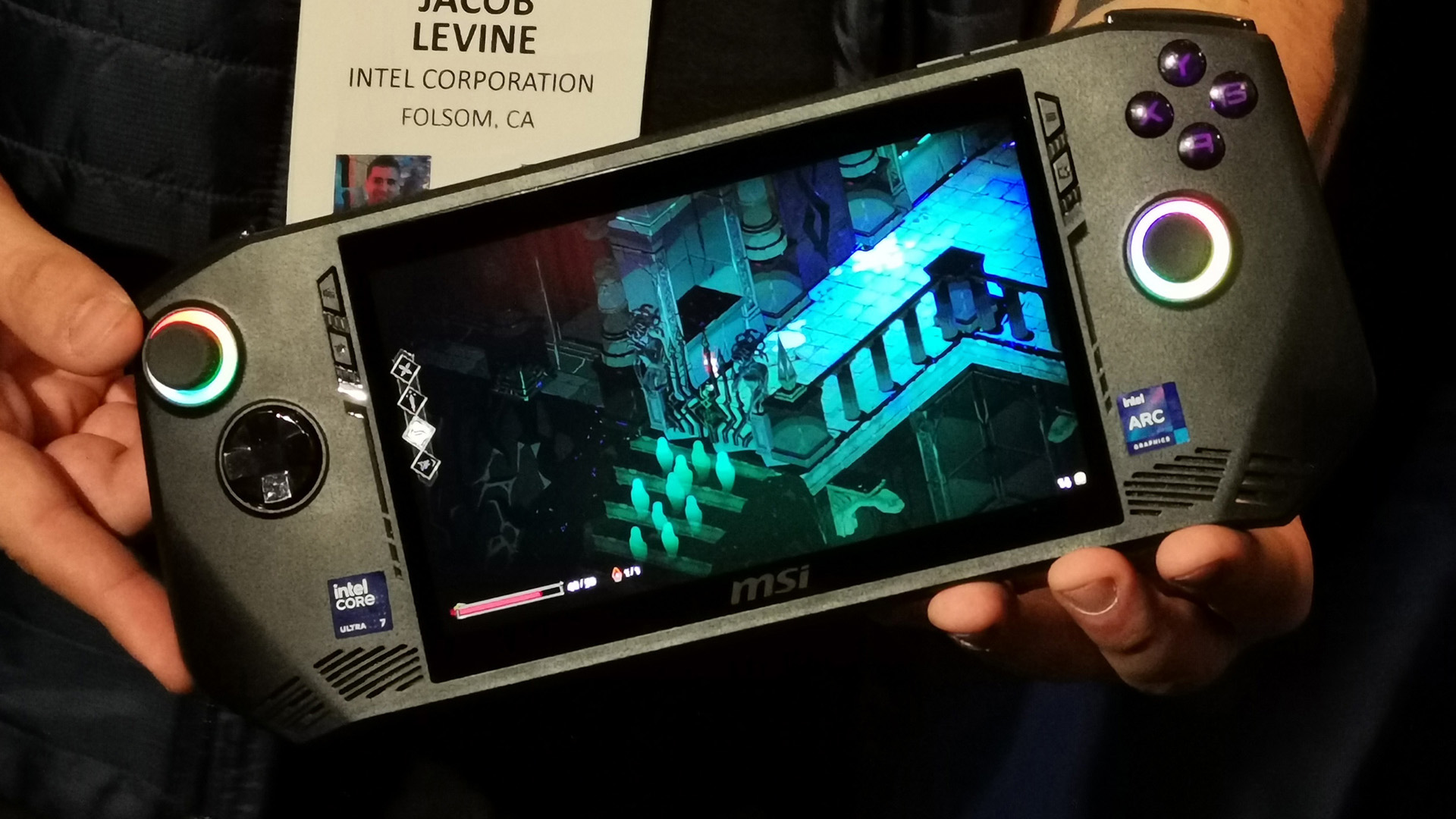
The Intel Core Ultra 7 155H features six P-Cores (performance cores) for heavy lifting, eight E-Cores (efficiency cores) for everyday tasks, and a further two low-power E-Cores. The CPU has 22 threads and a max turbo frequency of 4.8 GHz. This chip is the first to include an NPU, a neural processing unit dedicated to AI frameworks such as OpenVINO, WindowsML, and ONNX RT.
Also on the Intel Core Ultra 7 is an integrated 8-core Arc GPU. Intel has been working on its desktop Arc graphic cards for a while now. Whilst not a competitor against Nvidia or AMD’s high-end GPUs, with Intel’s XeSS super-sampling technology, the GPUs are more than capable of playing AAA games.
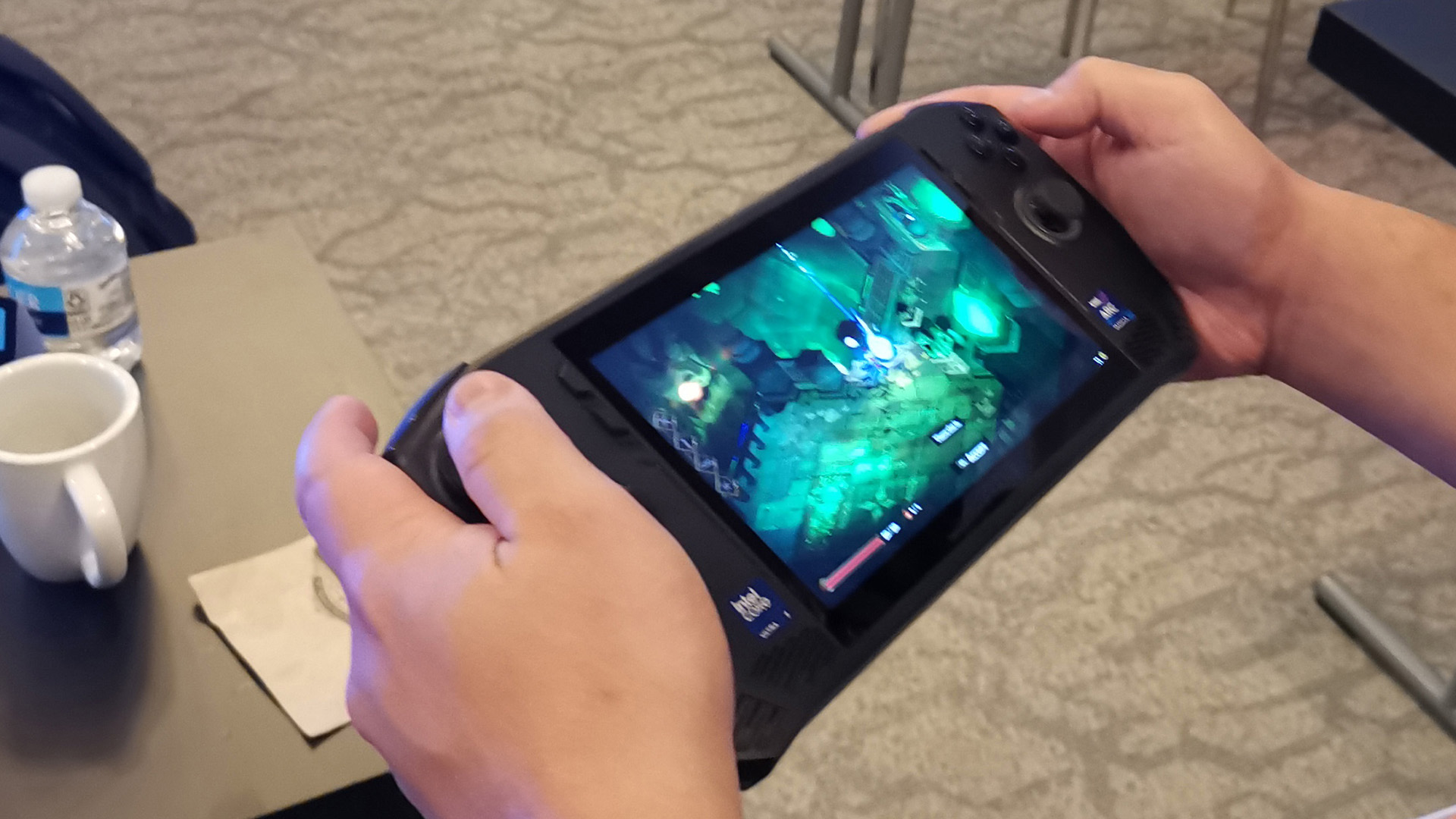
Released late last year, Intel’s Core 7 is truly a next-generation mobile processor. It’ll be interesting to watch performance improvements as PC game developers get to grips with NPU and ARC XeSS optimisations. Intel’s chip may be the heart that pumps the gaming goodness, but what about MSI’s Claw, itself?
One of my main bugbears about mobile gaming platforms is how fragile and toy-like they feel in my hands. I want something that I can grip and not feel like I’m going to snap the sides off. I also need a big, clear screen; one as big as you can go and still feel like it’s a portable unit.
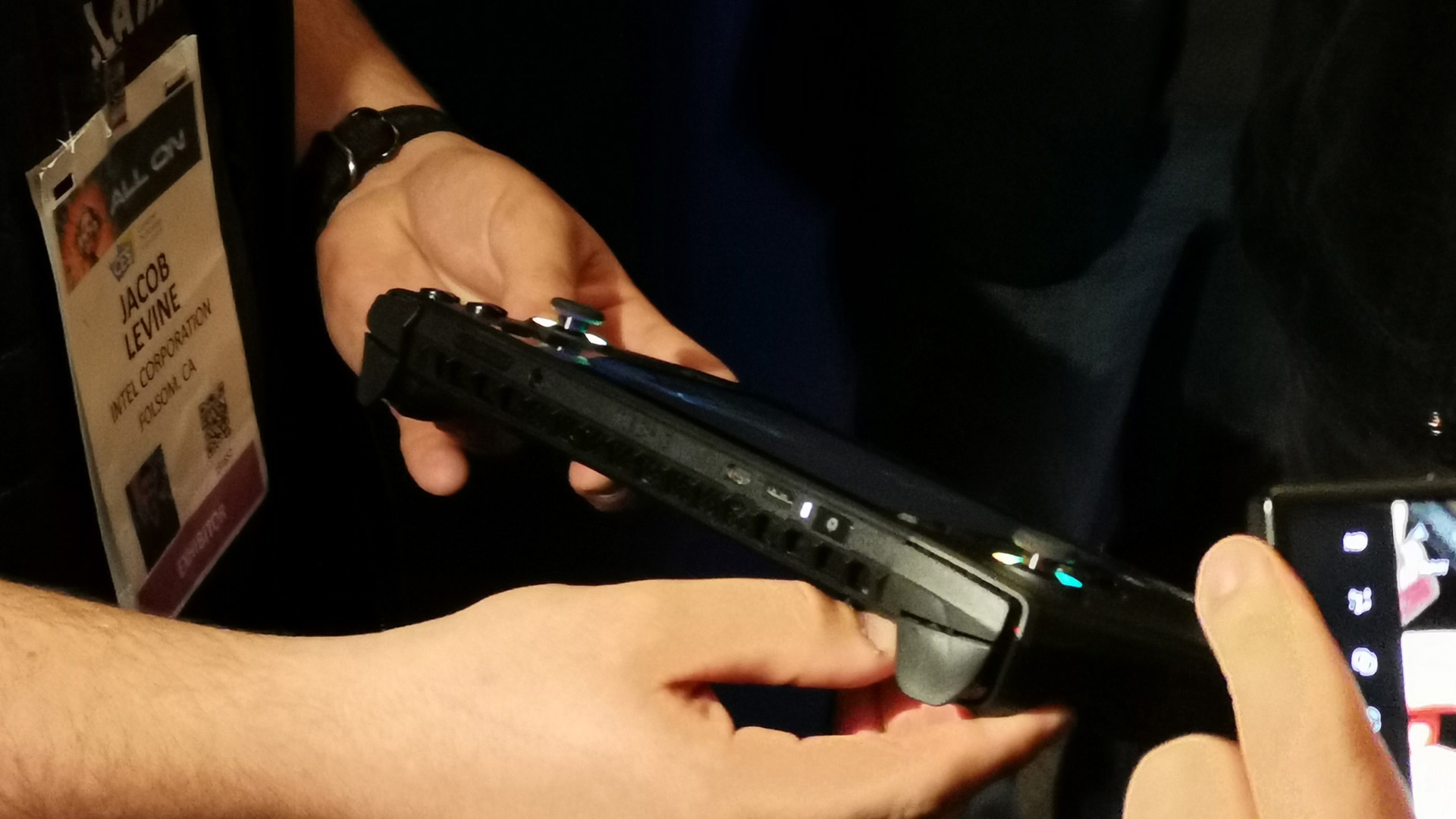
The first thing I said to the Intel rep when I picked up the Claw was, “It’s chunky”. And it is, in a very good way. The device felt robust and fit in my hands naturally with the very positive trigger and shoulder buttons in easy reach, along with the two joysticks and face buttons. The joysticks. There’s nothing silly or gimmicky, it’s like holding an Xbox controller. And that’s the first battle won.
The 7” 120Hz 1920×1080 screen is listed as IPS-level. It’s not OLED, but seems very close with some deep blacks. I’d need to spend a bit more time with it for a firm opinion, but at first glance, it looks good. And at seven inches, it’s certainly big enough for PC gaming.
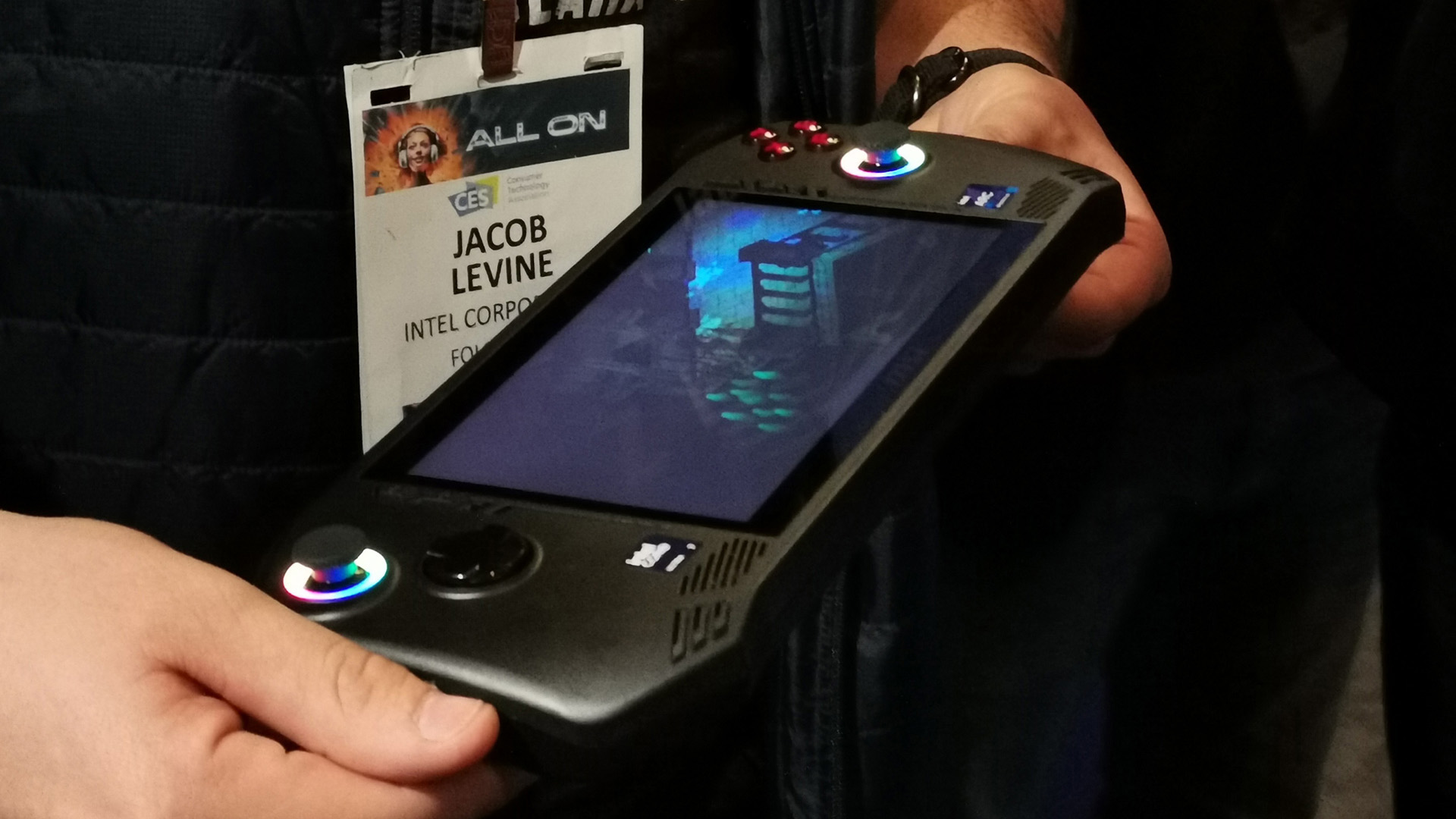
It was not the place to test the sound as the ambient noise was far too loud, but the device has two 2W speakers. Most will likely plug a headset into the audio in/out jack. There’s a Type-C socket for USB/DisplayPort and Thunderbolt 4 connectivity, as well as charging.
There’s also a slot for a Micro SD Card. Apart from the device using LPDDR5-6400 memory (rumoured to be 32GB), I can’t say what the device’s actual memory capacity or storage capacity with be as yet.
Game performance will very much depend on how well the developers have optimised their games to make the best use of the MSI Claw’s hardware.
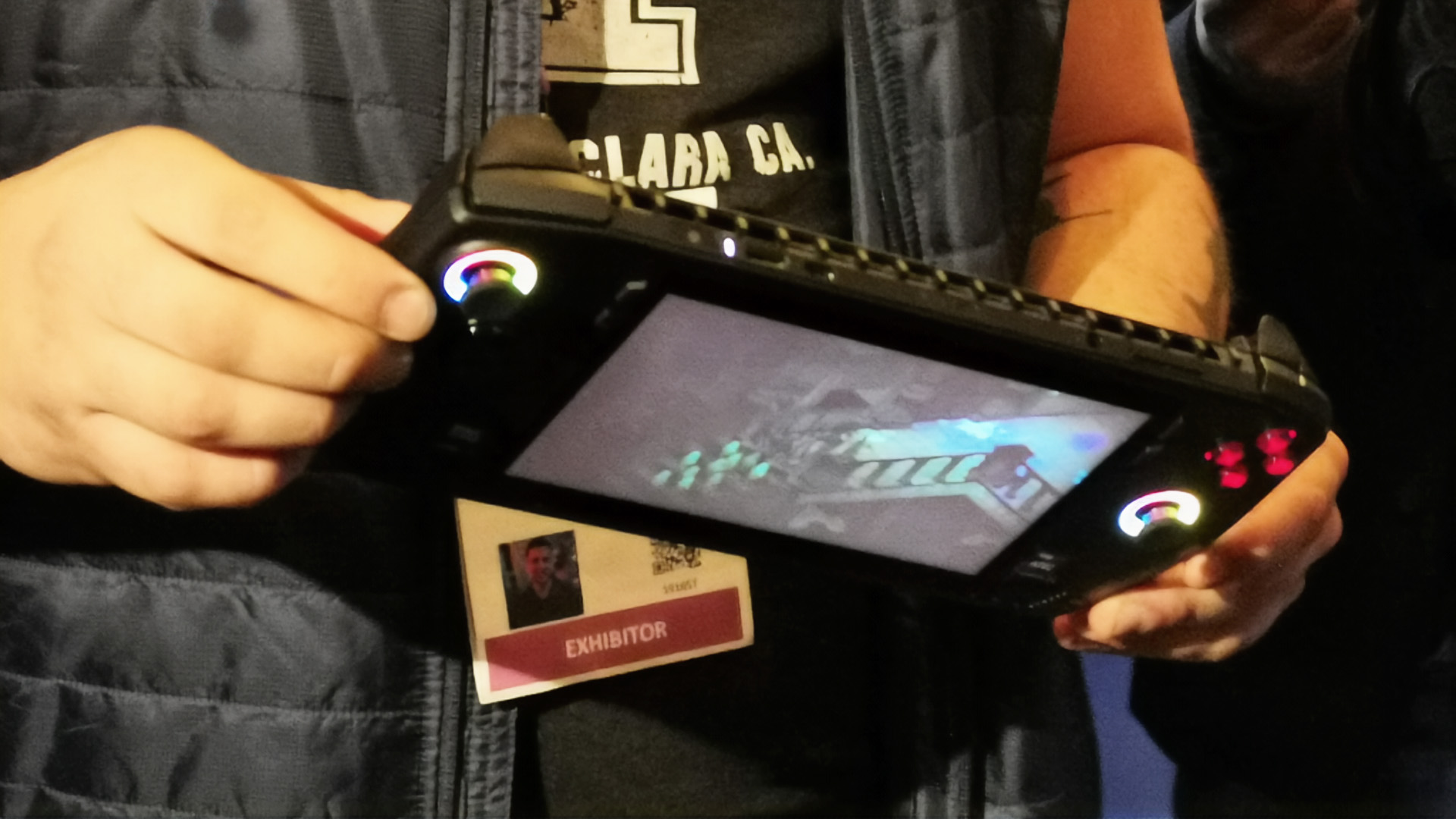
Titles making good use of Intel’s XeSS AI-enhanced upscaling will fare better than others. I’m currently testing a notebook with an identical Intel Core Ultra 7 155H processor and I’m getting good results, as long as I go in with reasonable expectations. The quality is not going to compare with my RTX 4090 desktop gaming rig. But I can see this rise of portable handheld gaming PCs forcing developers to finally spend more time optimising their code rather than expect gamers to just upgrade their machines.
Although short, my time with MSI’s Claw A1M handheld gaming device offered a glimpse of things to come. The future of PC gaming, thanks in part to Intel’s Core Ultra 7 chips, never looked so good, or so portable.

